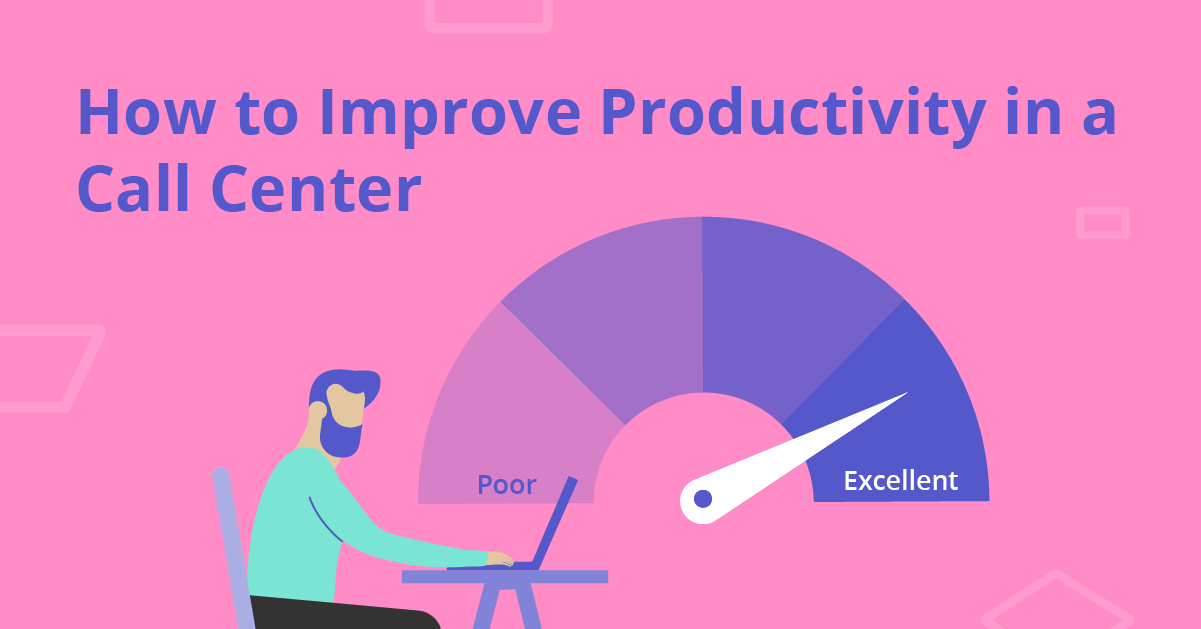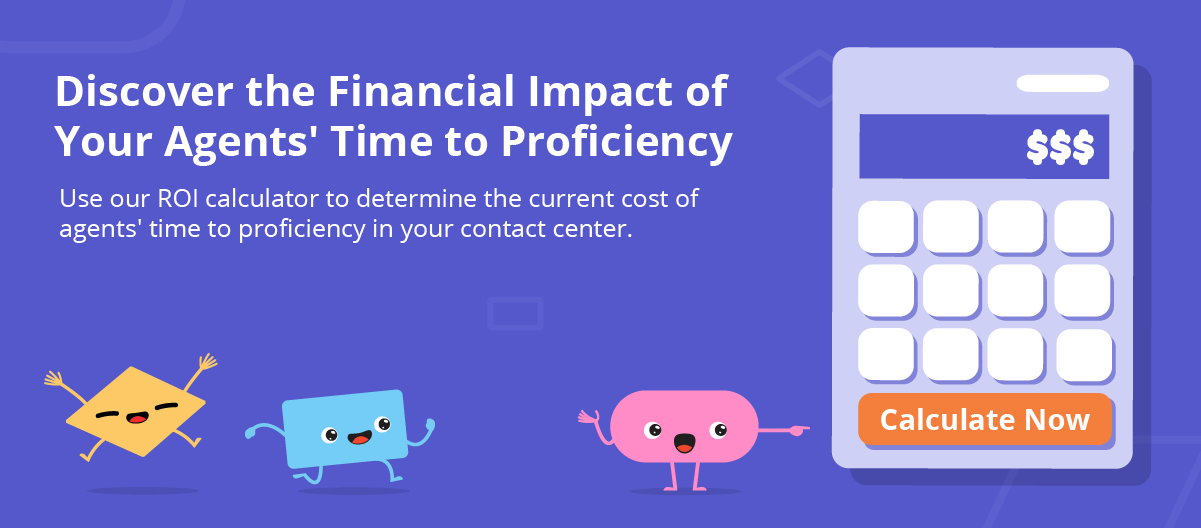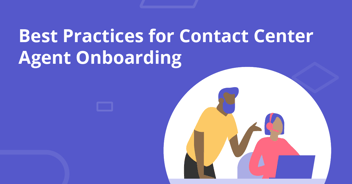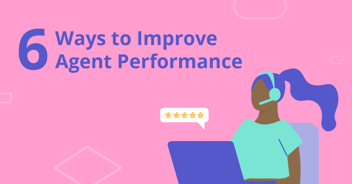How to Improve Productivity in a Call Center

The productivity of a call center is a critical factor in determining the growth and success of the business and how competitive it is in the market. Most importantly, high productivity means better financial outcomes as costs diminish and profitability increases.
Every call center leader strives to achieve operational efficiency by increasing productivity levels within their organization.
To accomplish this, it is essential to identify the key metrics that drive productivity and implement strategies for continuous improvement.
What is call center productivity?
Call center productivity is a measure of agents’ work output in comparison to the efficient utilization of time and resources. It reflects how effectively a call center operates to drive key results.
Agent productivity directly impacts call center productivity. When productivity levels are high, it has positive implications for everyone in the organization.  Agent Experience: Agents work at an optimal level and feel confident with the service they are providing customers. When their performance increases, so does their motivation and job satisfaction.
Agent Experience: Agents work at an optimal level and feel confident with the service they are providing customers. When their performance increases, so does their motivation and job satisfaction.
Customer Experience: Seamless customer service means that issues are handled and resolved promptly and effectively. This results in enhanced brand loyalty and retention.
Cost Savings: With an expedited learning curve, new hires are able to quickly acquire the skills and knowledge they need to reach full proficiency. This accelerated onboarding process reduces the time and resources invested in training and ramping up new agents.
Top call center productivity metrics to measure
There are several performance metrics that can be tracked to accurately measure productivity. By carefully selecting metrics that align with your call center objectives, you can gain valuable insights into areas that require improvement, make informed decisions, and ensure business success.
The following are the best indicators of productivity, based on call center industry standards.
Customer Satisfaction Score (CSAT)
Customer satisfaction is determined by surveying a customer following their interaction with an agent. It is essentially the measure of customer experience, one of the most important factors in a call center. A high CSAT score signifies that customers are satisfied with the level of service they received, which is a good indication of productivity.
First Call Resolution (FCR)
First Call Resolution is a metric that shows how often agents are able to resolve a customer’s inquiry during the first point of contact. If a customer has to call in several times, have their issue escalated, or constantly be transferred to supervisors, it suggests problems with productivity.
Poor FCR indicates issues such as inadequate training or inefficient systems that hinder agents' ability to address customer concerns. On the other hand, high FCR signifies excellent agent performance and productivity.
Successfully resolving customer issues on the first attempt also results in time and cost savings for the call center.
Average Handle Time (AHT)
Average handle time measures the amount of time an agent spends on a call, from the beginning of the interaction to time spent on hold to any after-call tasks.
A shorter AHT generally indicates that agents are efficiently assisting customers and managing their time well. However, it’s important to note that an excessively short AHT could imply that agents are rushing through customer interactions, potentially compromising the quality of service.
For this reason, customer satisfaction scores (CSAT) should be compared with AHT, since agents must take the time to fully resolve customer issues. The primary focus should be on improving service quality while simultaneously reducing AHT.
Percentage of escalations
The percentage of escalations represents the number of calls that agents are unable to resolve and therefore must transfer to a supervisor or different department for further assistance.
Ideally, every call would be successfully resolved during the initial interaction, with customers disconnecting after being completely satisfied with the service they received. Unfortunately, escalations can’t always be avoided, but a lower percentage of escalations indicates that agents are effectively assisting customers and contributing to the call center’s overall productivity.
Average time in queue
This metric demonstrates the average amount of time that customers spend on hold before being connected to an agent.
Extended call center waiting times pose a risk of customer dissatisfaction, leading to negative reviews or even call abandonment. Minimizing time spent in queue and ensuring prompt customer service by hiring an optimal number of agents and providing them with proper training is crucial for maintaining call center productivity.
Soft skills
The quality of service that a customer receives greatly relies on an agent's ability to create a humancentric interaction.
Agents that are equipped with a diverse set of soft skills, such as empathy, can offer a human touch in an otherwise fact-based transactional exchange. Customers appreciate feeling genuinely cared for and understood, leading to higher satisfaction scores and an overall enhanced customer experience.
Although soft skills are virtually impossible to measure on their own, they serve as a reminder that in the customer service landscape, quality often surpasses quantity.

5 ways to improve call center productivity
Leverage technology
To guarantee that agents can achieve a high level of productivity, it is crucial to streamline workflow by equipping them with optimal call center tools and technology
Simplify processes and create a single source of truth by implementing a knowledge base that is accessible to all agents through the cloud, whether they work remotely or in-office. With a robust knowledge base, agents have access to accurate and up-to-date information, allowing them to quickly find solutions and deliver consistent customer support. It also provides agents with the opportunity to collaborate and share knowledge with their team members to optimize productivity.
Only 22% of call center leaders actively seek input from agents when selecting new technology. One in five don’t consider agent input at all. Empower agents by involving them in the decision-making process since they’ll be the ones utilizing these systems daily. Including agents in this important business decision cultivates a sense of ownership and commitment, plus it increases their motivation to learn and effectively utilize the new technology.
Decrease low-value tasks with automation and AI
Manual, repetitive work can frustrate agents and hinder their productivity.
By using AI technology to automate processes and handle low-value tasks, agents can reduce their effort and direct their focus solely on customer interactions, leading to improvements in key metrics such as CSAT and AHT.
For example, a conversation guidance tool can analyze customer inquiries and instantly offer suggestions, eliminating the need for agents to manually search through the knowledge base.
Another way to leverage the power of automation is to unify agent systems. Unfortunately, more than 90% of contact centers say that their agents must use multiple systems and screens when supporting customers. Constant task switching due to fragmented systems hinders productivity as issues aren’t being efficiently resolved.
A unified agent desktop integrates systems into a single user interface to help limit the number of applications open at any given time. It allows agents to reduce call handling time and improve the consistency and accuracy of their responses.
Provide training opportunities
Agent training is an ongoing process that extends beyond the initial onboarding phase.
When agents are confident that their knowledge and skills are at an optimal level for assisting customers, their productivity increases. To ensure that agents are able to continuously improve, provide regular one-on-one coaching sessions, addressing any performance gaps and setting goals for growth. Take into account diverse learning needs, such as those working remotely.
Invest in upskilling tenured agents to help them adapt to the ever-changing call center environment. Provide learning and development opportunities on new processes and technology to ensure that agents are up-to-date on the latest advancements.
When agents are able to diversify their skill set, their work efficiency increases and service quality improves. Additionally, providing opportunities for growth within the organization can significantly reduce call center attrition rates.
Eliminate avoidable calls
To increase agent availability and reduce customer wait times, it’s beneficial to empower customers to handle basic issues on their own.
By implementing self-serve options, customers can troubleshoot and resolve common problems on their own. For example, they can submit their inquiry to an automation software that provides instant answers. Another option may be an online FAQ page that showcases frequent issues and their solutions.
If the customer’s problem is common and easily solvable, it is likely that they won’t need agent assistance, reducing the volume of incoming calls and freeing up agents’ time to focus on more complex customer concerns.
Analyze and manage performance
Empower agents to increase their productivity by ensuring that they understand the metrics they are being measured on. Establish clear expectations and benchmarks so that agents have a specific target to reach and surpass.
Providing agents with visibility into their metrics helps them stay on track with their progress. Regularly reviewing performance data is crucial in identifying any performance gaps and providing opportunities for improving productivity.
Continue to track agents’ metrics, and over time, consider any adjustments that need to be made. If agents are unable to meet expectations, try to identify the underlying reasons, and if necessary, revise the benchmark accordingly. On the other hand, if agents are consistently exceeding their performance targets, it signals an opportunity to raise the standard and set higher expectations.
Aim for ongoing productivity improvement
By prioritizing call center productivity and implementing these key strategies, organizations can increase operational efficiency, provide optimal service, and achieve significant cost savings. Agents and customers benefit too, as higher productivity leads to prompt issue resolution and increased satisfaction.
Ultimately, improved call center productivity directly translates to higher levels of business success over the long term.



